The often neglected domain of audio systems encompasses a world rich in complexity and intricacies. When confronted with a mysteriously malfunctioning sound apparatus, the problem frequently lies within the realm of buzz, hum, and interference. Yet, the layperson, and even some audio enthusiasts, lack the proper understanding to discern amongst these different forms of audio interference. As we delve into the intricate causeways of your audio infrastructure, we shall first equip you with knowledge to differentiate between various types of audio disturbance. Then, we will guide you on your journey through troubleshooting cable issues with an assortment of techniques and tools. Finally, you will learn practical solutions to resolve common audio interference problems,
Identifying Different Types of Audio Interference
Humming beneath the symphony of life, music weaves its mesmerizing melodies – a siren call to the ears and souls of millions worldwide. Yet, the beauty of this sonic enchantment can be painfully disrupted – pierced by the grating, jarring incongruence of audio interference. Be it the hiccup in the melody of your favorite record, the howl interrupting a life-altering music festival performance, or the feedback bringing your own sonic masterpiece recording to a screechy halt, these uninvited intruders are the bane of any music lover’s existence. It’s time we demystify these unwelcome guests, break them down and explore their essence.
Get ready for a journey down the audio rabbit hole, as we dive into the key types of audio interference.
One can hardly talk about audio interference without bringing up the prevalent Radio Frequency Interference (RFI). It’s that insistent, unwanted guest at the party, made more readily identifiable by that characteristic crackling or high-pitched whining. RFI finds its devious roots in varying sources – from the omnipresent cell phone, innocuous Wi-Fi equipment, to seemingly harmless dimmer switches or LED lights.
Next, we grapple with the irritating buzz of the Ground Loop Hum. Its pervasive drone is unmistakable – a product born of different audio components sharing the same ground point. It’s that persistent uninvited drone that threatens to swallow up the intricate layers of harmonious conversations unfolding in the audio domain.
Then enters the distorted step-cousin, Acoustic Feedback. This offender often has you cringing at live concerts. That spine-chilling wail, the howl that sends piercing shivers down your spine, is most likely Acoustic Feedback. Nurtured in the high volume surroundings of live performance spaces, feedback unfurls when the sound from the speakers reaches the microphone, and a menacing loop is born.
While interference may seem like the phantom of the audio world, out to shatter our aural dreams, remember, all is not lost. Treasures beckon in the form of counter-measures – shielding, balanced connections, optimal layout and setup – each a knight poised to ward off the interference demons.
Head high, soul ablaze, step forth and embrace your bond – your passion for music. Together, we’ll continue to cherish this love for rhythm and melody, transcending boundaries, exploring the ethereal power of sound… And yes, triumphantly banishing audio interference to the realm where it belongs – a shrugging footnote in the symphony of life.
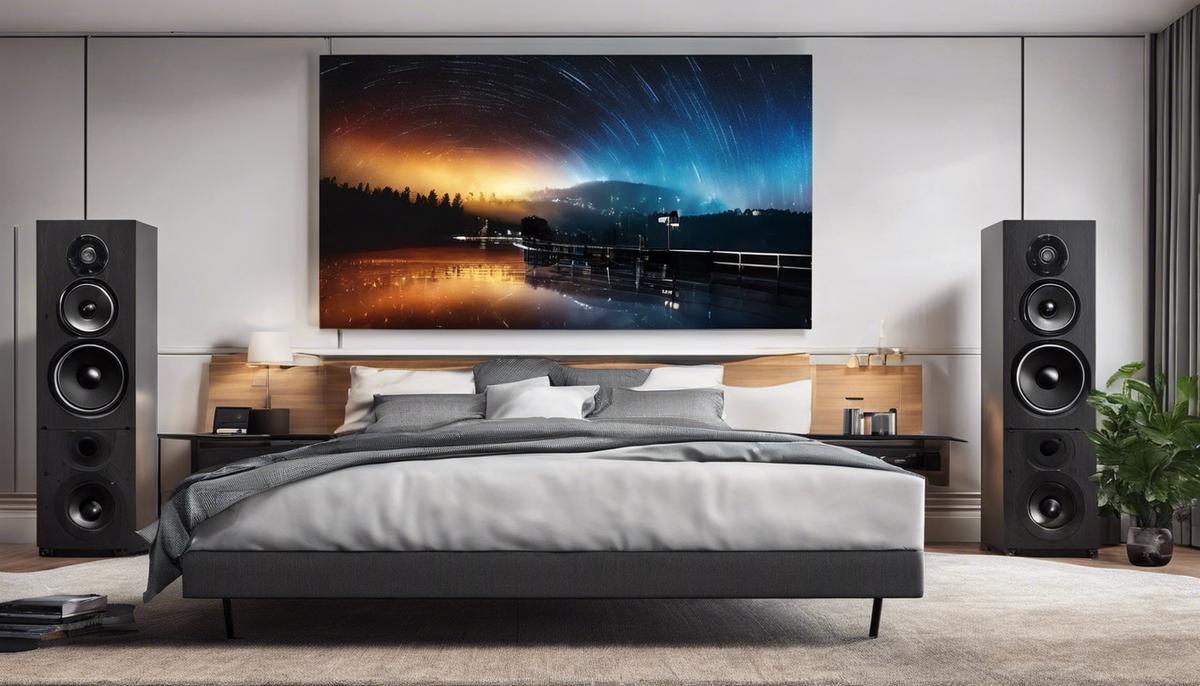
Troubleshooting Audio Cable Problems
All electrical devices have the potential to add unwanted noise to your audio system. For the music aficionado, achieving pristine, interference-free sound is truly an endeavor of heart and soul. This journey can sometimes feel like navigating a labyrinth. However, by understanding the essential steps for troubleshooting audio cable problems, we can revel in the immaculate purity of sound that we crave.
When you detect a buzzing, humming, or interference in your sound system, an incorrect setting or faulty cable is often the culprit. The first and most fundamental step is to disconnect your audio equipment, leaving only the amplifier and speakers connected. Turn the system on. If the noise continues, the problem lies within the amplifier or speakers.
If the noise ceases, reconnect each piece of equipment one by one, checking for noise after each connection. This process of elimination can isolate the source of the buzzing or humming. Once identified, consider changing the cable for that piece of equipment, as it can be a significant cause of interference.
Radio Frequency Interference can be caused by other electronic devices placed close to your audio connection. Based on our prior RFI knowledge, take heed of additional household appliances or electronic devices. Staying mindful of their interference will only help to amplify our love for the rhythm and harmony, intertwining the wires of melodic unity with a minimum of ruffled feathers.
Remember, cables transmit signals just like paths in a forest transmit foot-traffic. Pathways winding too closely together might disturb each other. As a music devotee, try to ensure that your signal cables and power cables aren’t organizationally entangled. When power cables lie close to the audio or speaker wires, they can induce a hum into the music signal. The interference essentially acts as an uninvited guest, disrupting the harmonious symphony of sound.
Another common enemy of clear sound is the Ground Loop Hum. This sonic vampire is best battled by ensuring all your audio equipment shares the same power point. By doing so, you will keep the electrical potential between them at the same level, reducing the chances of undesired sounds.
Acoustic feedback, that unsettling screeching, typically occurs during live performances. The proximity of the microphone to the speakers greatly influences feedback. Distance your microphone from the speakers and keep it pointed away, thereby reducing the intensive feedback loop, louder than any shouting match.
Along this auditory journey, it’s essential to understand and acknowledge the beauty in the struggle. It’s this very struggle that breeds the sweetest harmony, echoing through the myriad tunnels of life. There’s a profound intimacy in sound, linking souls across time and space – and its preservation isn’t just a labor of love, but a commitment to the expressional power of awesome soundscapes.
Let us all continue to persevere through the noise and strife for the triumphant, life-affirming harmony beyond. Through understanding, patience, and a little troubleshooting, we’ll minimize interference, and maximize the sheer and ethereal beauty that is music, expressed through the dance of electronic signals in our much-loved audio appliances.

Fixing Buzz, Hum, and Interference
The essence of music lies not only in the notes themselves but in the spaces between them – in the silence where the echoes of melodies resonate. But when this precious silence is invaded by audio interference and cable problems, our deep connection with music is disrupted. To champion the enduring love for music, one must effectively navigate these sonic challenges. Specific causes of cable-related audio disturbances need appropriate proven solutions to restore the purity of sound, and thus, its emotional language.
Audio interference caused by cable problems can often be traced back to physical damages. Jacks can come loose, cables can be frayed, and in some cases, they may be entirely broken. In such instances, consider replacing the flawed parts. It’s crucial to ensure your audio gear is always in top shape to broadcast the music, untarnished by unwanted noise.
In the presence of an unknown cause, a process of elimination is essential. Starting with the obvious – ensuring all the cables are correctly plugged. Unplugging and re-plugging can also clear any momentary glitches in the system. Keeping your signal cables and power cables separated can prevent interference from electromagnetic fields.
Humming noises coming from cables may attribute to a ground loop. This occurs when there is more than one path to ground. While it can be tempting to remove the grounding pin from the plug to solve this issue, this is a dangerous approach that should be avoided. Instead, consider a ground loop isolator – a small device that can prevent electrical current from flowing down unwanted paths.
Interference from other electronic devices nearby has the potential to wreak havoc on your music experience. A useful measure is to turn off electronic devices not necessary for your music session, creating an environment free from unnecessary electronic activities – a sanctuary for your sonic expressiveness.
Cable organization is not merely about aesthetics, but it plays a significant role in preventing interference. Neatly routing and securing your audio cables, physically separating them from power cables can drastically reduce the chances of audio interference, establishing clean paths for unhindered music transmission.
Feedback can often be derived from incorrect placement of microphones relative to speakers in live performances. Maintaining the right distance and orientation of the microphone from the speaker can minimize this. Additionally, a high pass filter reduces low-frequency signals more prone to feedback.
Grasping the passion for music means more than just enjoying melodies and rhythms. It implies a fight against all the elements risking this sonic purity – combatting audio interference becomes a melodic crusade. Every beat, note, and silence deserves to be heard without the interruption of cable glitches and interferences. In the face of every sonic challenge lies the opportunity to deepen our relationship with music, and triumph over interference. This victory ensures that the profound, emotional language of music continues to unite, soothe, and inspire.

Photo by unstable_affliction on Unsplash
Having traversed the complexities of audio system interference and the conundrums that come with it, you are now empowered with the skills to diagnose, troubleshoot, and resolve issues within your system. The journey from understanding the distinct types of interferences to learning about practical solutions for these issues equips you to enhance your audio experience and rectifies common challenges. But remember, the key is patience, observation, and constant learning. With time, even the elusive world of audio interference will become a familiar landscape ready to be mastered. Remember this knowledge not as an end, but as a stepping stone towards your pursuit of sonic perfection.
In today’s era of sound engineering, digital audio has taken center stage, transforming the ways we create, consume, and manipulate music. Its rise to prominence necessitates an in-depth comprehension of its workings, including the possible glitches and distortions inherent in the system. This journey into the world of digital audio takes us through its fundamental concepts, from the basic principles of its operation, its advantage over analog counterparts to its nitty-gritty characteristics. We dissect the phenomena of clipping, aliasing, and jitter, shedding light on their core principles and their effects on our music, while concurrently presenting strategies to combat these distortions for optimal audio quality.
Understanding Digital Audio
The symphony of sound that we have come to know as music has been the lifeblood of civilization for millennia. From the rhythmic pounding of sticks in tribal gatherings to the sophisticated manipulation of digital sounds, music has truly evolved, yet it retains its pristine nature of reaching into our spirits and unbinding the chains that fetter us. In the contemporary system of sound arrangement, one innovation stands tall, casting a profound shadow on direct acoustics: digital audio in music. It holds a beauty so profound, and complexity so enormous, that it transforms the ephemeral into the tangible, making music a truly consumable and transformative art.
Dive into the uniquely captivating aura and you will discover why digital audio has become a triumphant symphony in itself, shaking the very foundations of musical creation, appreciation and distribution. Digital audio unearths an insatiable thirst for perfection, providing recording artists with the opportunity to create, edit, and replicate perfect renditions of their compositions. Gone are the days when musicians had to rely solely on acoustic perfection and hours of retakes to recreate the optimal version of their work. Digital audio equips artists with the flexibility they need to manipulate and sculpt every note, every harmony, and every beat.
Yet the beauty of digital audio is not just in its creation, but in the listening experience, it provides. This dynamic form of artistry allows for an inconceivable audio quality that pierces the veil of standard comprehension, giving the listener an immersive experience impossible to recreate without it. Whether it’s the tingling sensation from a perfectly engineered bass drop or the subtle echo of an acoustic guitar, this powerful tool enables audio engineers to fine-tune every detail of a musical piece, elevating the experience for those at the receiving end.
Despite its undeniable allure, one must not overlook the complexity that dances behind the scenes. The transformation of raw sounds into a seamless flow of digital audio requires an intricate process of sampling, quantization, and encoding. Each step is crucial, demanding a labor of precision and understanding only known to diligent audio engineers who have mastered the craft. It’s a harmonious blend of mathematics, physics, and sound technical knowledge, translated into an art form that transcends ordinary music comprehension.
Remarkably, digital audio is a universal sculptor, bestowing its gifts upon a vast range of music genres. Its artistry is not genre-biased, it reverberates through the pulsating beats of EDM, works magic in the ethereal realms of classical compositions, and breathes life into the raw power of rock and roll. Through digital audio, every genre can attain an unprecedented level of precision and polish.
The beauty and complexity of digital audio lie not simply in the pure virtuosity of sound but in its power to transcend borders, unite cultures, and democratize music. A digital audio file, in all its simplicity and complexity, bridges oceans allowing a teenager in the heartland to connect with a Busker halfway across the globe. It has emancipated music from the physical, ushering it into a realm built purely of bites and bits, where it can be enjoyed in its exalted form, far and wide.
Digital audio in music is more than a technological marvel. It is the driving force of our ever-evolving music culture, and a testament to human creativity and expression. It plunges musicians and listeners alike into a dance with sound, enhancing every twist, every turn, and elevating the shared experience to extraordinary heights.
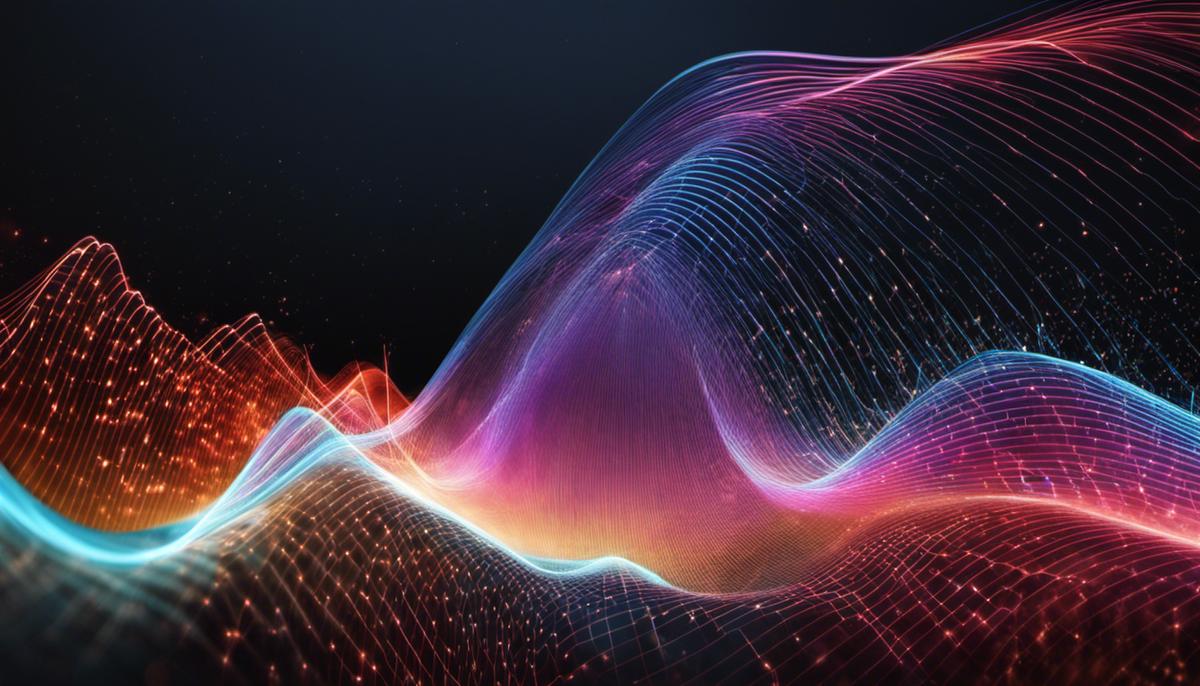
Decoding Clipping
As we plunge further into the technicolor tapestry of musical virtuosity, we find ourselves fixed in a digital domain. This sphere, for all its prismatic versatility, is not free of imperfections – namely, the sinister phantom known as clipping, a distorter of our revered rhythms and euphoric entrancements.
Clipping is the audible distortion that occurs when an audio signal attempts to cross the limits of amplitude, pushing past the maximum decibel levels capable of being reproduced by any given system. This transgression creates a sharp, undesired cut-off, transforming notes that once sung into unmelodious monsters.
Digital audio is engineered precision, a meticulously calculated array of bits and bytes. But in the avaricious pursuit of loudness, we find this precision falling into a veritable pandemonium. The introduction of clipping is a liquefying lava-lamp of loudness war casualties. Artists and producers striving for maximum auditory impact often fall into the trap of over-amplification, causing peaks of their musical composition to be truncated or flattened, generating the distinctive distorted noise.
Modernity has swaddled us in a universe of cinematically sweeping orchestral scores and foot-thumping electronic beats. But without careful attention paid to the beast of clipping, we risk tarnishing these melodious masterpieces of artistry. Floating through the pulsating veins of euphoric beats and lofty tunes, digital audio’s insidious doppelganger can swiftly turn sonic ecstasy into ear-splitting agony, muting the intricacies of harmonies, and erasing the delicate echoes of an artist’s soul-song.
So, we take a beat – pause the ascent into booming decibels – to administer an antidote to this menacing malady. In this technicolor realm, vigilance is the watchword. Cue the music, and let the sound engineering arts serve their purpose of protecting the integrity of our digital symphonies. The tools that offer us the ability to shape, rearrange, and refine sounds can also keep clipping in check.
From dynamic range compressors to soft limiters and automated level control plugins, there is a pantheon of audio processing solutions. These tools regulate volume levels, prevent amplitude spikes, and preserve the intimate nuances of every strum, beat, and chorus. They ensure that each electronically engineered note can surge unfettered, with full-bodied vibrancy, through our headphones and speakers, without succumbing to the dread distortion of clipping.
In the realm of digital audio, the symphony of sound bites sculpted into melodies, harmonies, and rhythms is an unending tableau of precision. Amidst this pixelated pantheon of sound, we are behooved to serve as the guardians of musical fidelity. Ensuring our beloved scores remain untarnished by the clawing hands of clipping is a testament to our collective love and reverence for the transformative power of music.
The enigmatic universe of melodies, timbres, and rhythms is a playground of infinite possibilities. Despite the lurking ghost of clipping, all we need is a keen ear and relentless determination to extract the true essence of our favorite tunes. After all, music is about feeling the pulse of the beat, echoing the rhythm of our hearts, and guiding us on an exhilarating voyage across the boundless sea of emotion. So, here’s to preserving our treasured tunes and crowd-moving beats from the phantom that is clipping, and to exploring the vast, vibration-filled void of the digital audio cosmos.

Aliasing Unveiled
Amidst the crescendo of digital music symphonies and harmonious human-machine collaborations, aliasing stands as an intriguing concept that often nudges on one’s perception of audio. The subtle beast of aliasing strikes a harmony of technicality and abstraction, subtly shaping the listening experience of each Audiophile.
Aliasing, a distinctly digital phenomenon, gracefully waltz into the scene when a piece of audio is converted from an analog signal into a digital signal. Temporarily defying the immersive, life-enveloping symphonies, we delve into this transformation, delicately stripping away the magic to illuminate the machinery underneath. The grating hip-hop beat, the soulful strains of a violin, the pulsating rhythm of techno – they all dance to the tune of this digital rendering.
Let’s condense the concept of aliasing to a simple, audaciously oversimplified explanation – it’s like an agile pickpocket in a crowded subway car, stealthily morphing the musical note while its soul is in digital conversion. This transforming process closely listens to the enactment of the ‘Nyquist-Shannon sampling theorem,’ which propounds that audio must be sampled at least twice the highest frequency. An overture in ignorance of this rule ushers aliasing into the extraordinary spectacle of music.
In the realm of digital audio, aliasing isn’t simply a nuance to purists in search of tonal perfection, but it significantly alters the integrity of the music, enveloping it with an uninvited layer of distortion. Imagine it as an uninvited guest who saunters onto the stage in the middle of the philharmonic symphony, casually playing bagpipes.
Yet, in pure defiance of acoustic precision, some composers playfully flirt with aliasing. In electronic music, especially in genres radiating a raw, metallic edge, aliasing is purposefully induced to render a texture that’s sublimely grunge and cutting-edge. A daring sound designer may even surgically wield aliasing as a chisel, sculpting an element of ‘imperfection’ that makes their symphony truly human.
However, it’s essential to keep one’s musical ears keen and vigilant of unwelcome aliasing in general music appreciation. Tools, software, and digital filters exist, offering a firewall against this unwelcome distortion. It is these detailed nuances and the interplay between technology and raw, passionate music that brings about a uniquely digital flavor to the vast symphonic landscape.
The story of aliasing in digital audio is a story of borders crossed and frontiers explored, seeking to capture the excitement of tones and beats within the finite confinements of digital encoding. From the enigmatic whisperings of aliasing comes a cue to reconcile the perfection offered by digital precision with the undulating, unpredictable beauty of raw notes. Undeniably, the thrilling saga of sound engineering underscores the infinite power of music as an indomitable area where technology dances to the rhythm and beat of creativity, and not the other way around. Steeped in this understanding, the act of enjoying music takes on a different note, becoming part of a larger experience, an expansive language that unites us all in the digital age.
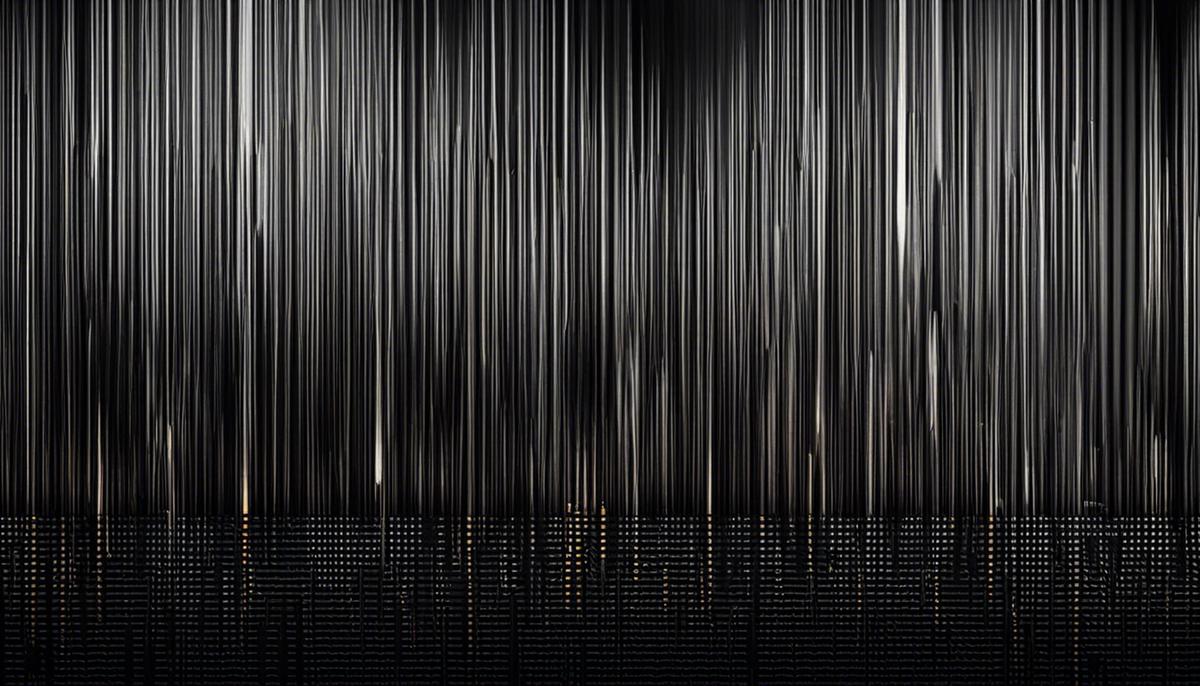
Jitter: An Unseen Alterer
Striding further into the invigorating landscape of digital audio, many music enthusiasts and audiophiles alike encounter the enigma of jitter. This obscure phenomenon, often sidelines, wields a subtle influence over the musical journeys each of us embarks on.
Like an unpredictable current beneath the glassy surfaces of digital music, jitter can alter the course of audio signals. It refers to the temporal variations of a digital signal’s fundamental pulse, typically manifesting as slight anomalies in timing precision during signal conversion. Although seemingly trivial, these small disruptions can trigger substantial changes in the resulting sound, infusing it with slight blots of distortion.
Jitter rests at the crossroads of music and technology, embodying the dual nature of the digital music experience. It’s an offbeat drummer, hijacking an otherwise flawless rhythm, turning perfection into acoustic authenticity with its unusual tempo.
Diving into the chaotic beauty of live performances, it is jitter’s invisible hand that transforms a polished studio recording into a unique, on-the-spot creation. This slight irregularity breathes life and spontaneity into the digital world, preserving the raw authenticity of music that often risks being watered down in the digitization process.
However, unchecked jitter can lead to a disorienting labyrinth of distortion. This can permeate our listening experiences, rendering symphonies that were originally harmonious into jarring, divergent compositions. Chasing the immersive, high-definition experience of digital audio, enthusiasts are often driven to grapple with jitter, striving for a delicate balance between its creative potential and disruptive tendencies.
Though jitter poses a gnawing challenge to sound engineers, it has catalyzed pioneering developments in audio technology. Anti-jitter circuits, clock recovery techniques, and high precision oscillators are among the arsenal employed to minimize the indelible fingerprints of jitter. Just as music festivals bring together disparate notes under a unified melody, engineers and enthusiasts join forces in their shared pursuit of harmony in digital music.
Delving into the imaginative realm of electronic music, artists are experimenting with controlled introduction of jitter to push boundaries. This deliberate dalliance with disruption challenges traditional ideas of perfection, bringing forth innovative soundscapes that invite the listener into a vibrant conversation.
Jitter underscores the symbiotic relationship between man and machine, where music’s emotional ardor dances with digital precision. The phenomenon reminds us that even within the perfectly calculated world of bits and pixels, there lies a certain sense of randomness and freedom akin to improvising a guitar riff or adding a new beat to a rhythm.
As our digitized melodies continue to reverberate across borders, so too does jitter accompany us, whimsically twisting our perceptions of sound and rhythm. It subtly challenges us to not merely hear, but intimately listen to the intricate nuances in music. This is a reminder that even in the digital matrix of music, there’s still a need for human touch, instinct, and a discerning ear.
In the grand symphony of music that animates our life, jitter weaves its own unpredictable melody, shaping and coloring the harmonies that echo in our ears. The phenomenon is not just a glitch in the digital realm, but a partner in our musical journeys, inspiring us to reimagine sound in new and exciting ways. Perhaps, in every journey that music takes us on, we ought to welcome a little jitter to keep us on the edge, to remind us of the joy of unexpected turns, and the thrill of forging untamed rhythms.

As we unravel the veil of digital audio’s complex landscape, it is clear that understanding its intricacies, such as clipping, aliasing, and jitter, is crucial for music enthusiasts and hobbyists. Mastery of these concepts presents the golden key to unlocking the full potential of music in a digital age. With knowledge on how these distortions occur, their implications on sound quality and strategies to mitigate them, we equip ourselves with the power to revolutionize the way we create and appreciate music. Ultimately, deriving the sheer joy and satisfaction of sound in its purest form is intrinsically linked to the profound knowledge of the sophisticated world of digital audio.
In the realm of sound recording and music production, the devil is often in the details. One such detail is microphone bleed—a phenomenon both loved and loathed by sound engineers and enthusiasts alike. It’s an intricate dance where sound leakage between different microphones in a recording setup can become a nemesis or an unexpected ally. Indeed, mastering the concept, causes, and control of microphone bleed can shape the quality of a recording significantly. From explaining the technicalities to exploring its implications, from discussing ways to minimize bleed to post-production adjustments; let’s delve into the subtle world of microphone bleed and demystify its workings.
Understanding Microphone Bleed
On the pulsating heart of musical creation, amidst the enchantingly resonating symphonies of sound, there exists the less-noted, less-romanticized but utterly integral player: the almighty microphone. Yet, like any performance, be it a poignant indie ballad or an electrifying rock anthem, there exists a hidden nemesis, an unseen hiccup in the otherwise immaculate symphony of sound. This culprit, often just as omnipresent as the microphone itself, is the phenomenon known as microphone bleed.
Ornamented with numerous pseudonyms – leakage, spill, or crosstalk – microphone bleed refers to the unwelcome intrusion of unintended, external sounds that barge into your audio recording. It’s like those uninvited guests at every concert who decide to engage in the loudest conversation, just when the most soulful guitar solo ensues.
Microphone bleed happens when reflections from various instruments or voices meet in the live room and swirl into the microphone, even when it is tuned to record a specific instrument or voice. Imagine Bob Dylan’s harmonica subtly sneaking into The Beatles’ ‘Twist and Shout’ or a surreptitious smattering of Aretha Franklin’s soulful vocals punctuating The Rolling Stones’ ‘Paint it, Black’. While these examples are purely fictional, they articulate the surreptitious incursion microphone bleed causes in an audio recording.
At the heart of this phenomenon lies the acoustic quirkiness of the live room. These uninvited sounds are largely determined by the physical environment around the microphone. Unwanted external noises, echoic feedback, and overwhelming reverberations can all contribute to microphone bleed. Microphone bleed, thus, is almost as versatile and complex as the very genres of music themselves – much like jazz can be smooth or discordant, folk can be ethereal or gritty, so too can microphone bleed morph from slight, inconspicuous whispers to deafening, intrusive noises.
The proximity, orientation, and type of microphone also play substantial roles in determining the stealth and severity of this audio avalanche. No two microphones are created equal, and thus they each bleed differently – a hauntingly beautiful expression of their unique sensitivity to the world of sound around them. A directional microphone, for example, is less susceptible to bleed compared to its omnidirectional or bidirectional counterparts, tracing back to the differences in each one’s sensitivity to sounds from various directions.
Knowing microphone bleed is not a plea to despise it; like any unwelcome guest, sometimes they bring unexpected joy to the party. At times, a hint of bleed can infuse life into an otherwise sterile recording syncopating rhythm and harmony in a way planned articulation might fail to accomplish. Savvy musicians steer bleed, turning its unwelcome presence into an unexpected harmonious blend, rendering a testament to the unending creativity and resilience in the face of the unusual sonic intrusions that music embodies.
Understanding microphone bleed is to unfurl another layer of the complexities inherent in the creation of music. It is delving into the crucial mechanics behind the magic, enhancing not just the musical ear but the heart that rhythmically beats to the euphonic symphony of music’s incessant evolution. Microphone bleed, then, stands not just as an audio phenomenon but rather an emblem of the constant dialectic between creativity and adversity that nestles in the very soul of musical creation.
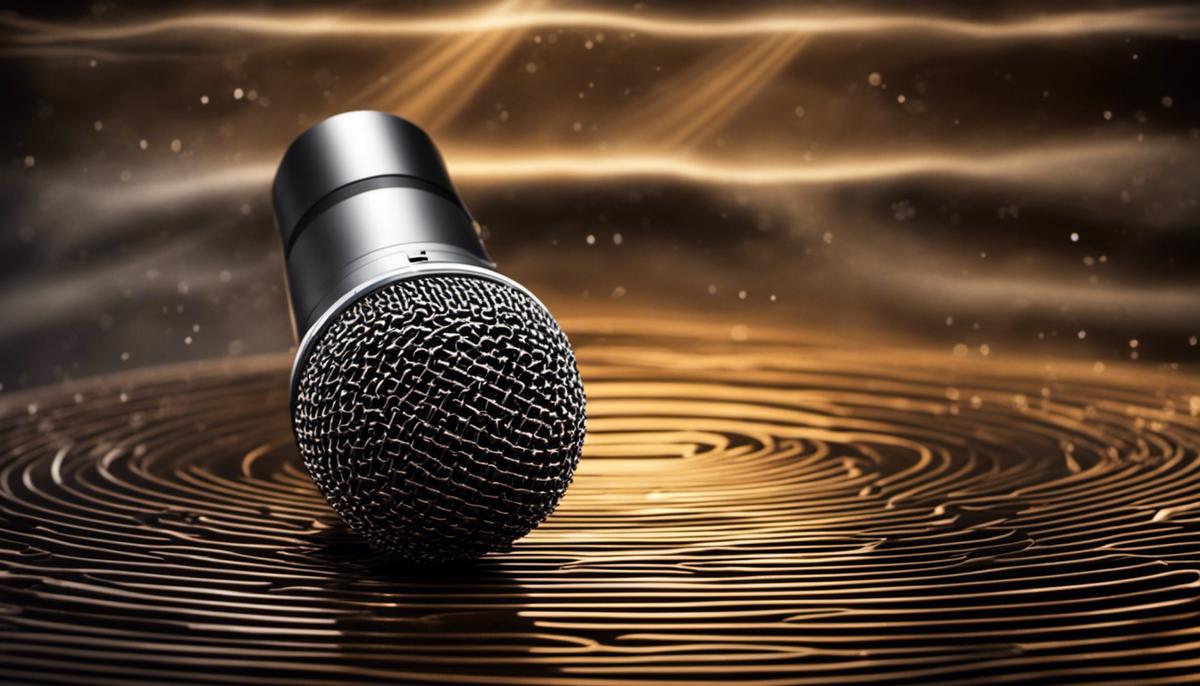
Assessing the Consequences of Microphone Bleed
Riding the sonic waves of the music universe, when one speaks of microphone bleed, a diverse range of reactions emerge. However, no passionate music lover or artist can deny the profoundly nuanced impact it has on the music we love.
Microphone bleed, although commonly looked upon as a blemish on the pristine body of audio production, carries with it an unconventional charm. It’s akin to the inadvertent smudge on an artist’s canvas – an imperfection that adds a touch of candid realism to an otherwise meticulously rendered façade.
Particularly in the realm of live music and festival sets, an environment we often find ourselves entranced by, microphone bleed can be an unsung hero. It is the shadowy accomplice granting us the unadulterated rawness and lifelike resonance of our favorite bands and artists. Like the ephemeral echoes soaring through the concert hall or the jubilant stir of crowd murmurs, microphone bleed mirrors these sonic specters to recreate the very fabric of a live music experience.
Diving deeper into the labyrinth of microphone bleed, one may ponder, is it possible to harness this phantom of sound? The answer lies in the strategy pursued by skilled audio professionals. By judiciously controlling the level of bleed and the path it takes, these sonic architects coherently blend individual elements, carving a unified soundscape. A reminiscent manifestation of this is the “room sound”, where the character of a space breathes life into a recording, mirroring the live experience for the listeners at home.
Furthermore, the field of acoustic music, with its intimacy and organic warmth, often relies on the controlled transgression of bleed. The interplay of instrument tones, the delicate hum of strings, all become a part of the greater auditory picture thanks to microphone bleed. What would a folk ensemble be without the shared essence of sounds merging, interpenetrating, participating in an intricate dance?
But in truth, it’s not just the acoustic or live music genres that can benefit from this intricacy. Drums, for instance, are a shining testament within electronic music genres, embracing the bleed between the different percussive elements for a cohesive, authentic sound.
The sophistication of microphone bleed encourages us to step beyond the confines of our previous understanding and embrace the symphony of sounds coloring our auditory world. Embracing the bleed is a testament to a true music lover’s quest for authenticity and depth. It compels us to widen our sonic panorama, unmask the binary of perfection and imperfection, and relish the harmony of their co-existence.
Hence, as we tread the vast cosmos of music, let’s remember – not every echo is meant to fade away into the void, and not every bleed is meant to be cured. For sometimes, in these overlooked spaces, the soul of music finds its potency and its truth. Music, after all, is a grand tapestry, and even the tiniest thread contributes to the majestic design. And isn’t that, dear connoisseur, what makes our beloved art form so breathtakingly beautiful?
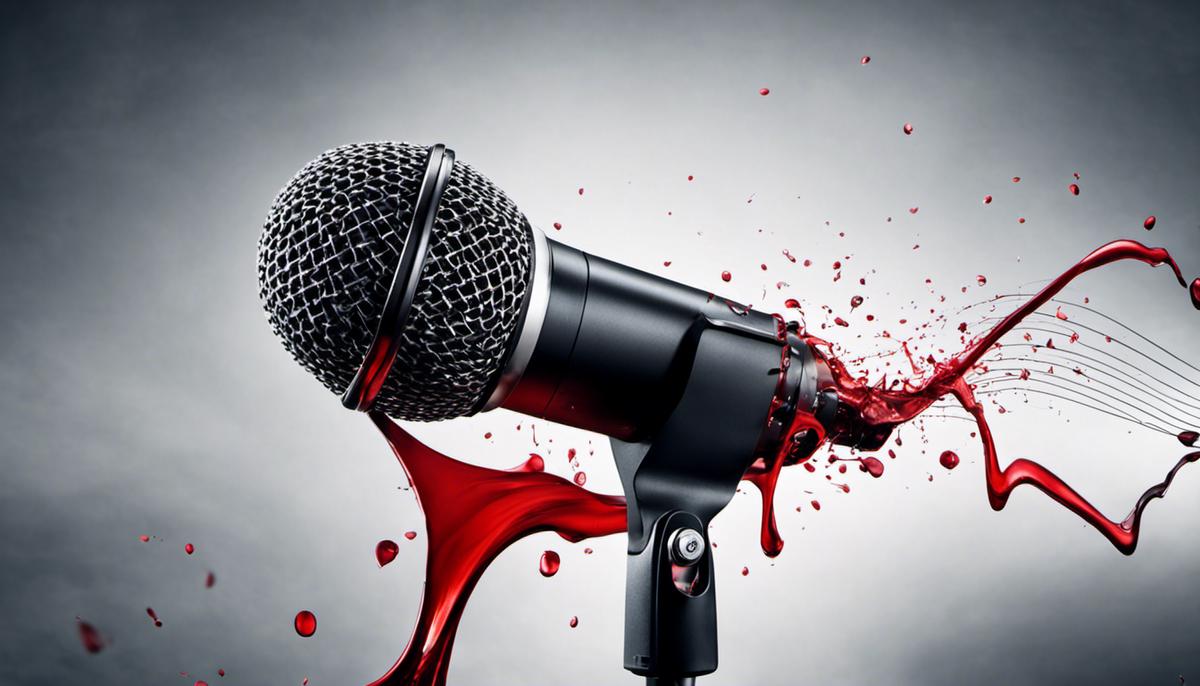
Microphone Techniques And Gear to Minimize Bleed
Approaches to curb microphone bleed: Exploring techniques and gears
The crucial equilibrium of controlling microphone bleed is akin to choreographing a ballet of harmonious elements. It’s all about precision, finesse, and a keen understanding of the dance between sound and silence. Now that we have cast light on the whys and wherefores of microphone bleed, let’s delve into the influx of tactics used to control, or rather, to orchestrate it.
The mic technique plays a pivotal role in influencing bleed. The use of Cardio-Pattern Microphones, known for their heart-shaped polar pattern, can minimise undesired background noise and leakage. Positioning these microphones in a way that the back, which has the least sensitivity, faces the unwanted sources can be a game-changer.
Another pivotal player in this realm is the gooseneck microphone, a virtuoso at discriminating between the absence and presence of sound, ideal for musicians hunting down precision. Coupling it with windshields can drastically reduce unwanted noise caused by wind, breath, and pop noises, thereby reducing unanticipated bleed.
The use of Portable Isolation Booths has been heralded as a revelation within the music circles. This gear can isolate the microphone from the ambiance, ensuring only the sound projected directly onto the microphone gets captured.
Moving onto the tantalizing realm of production techniques, High-Pass Filters, or HPF, can effectively control microphone bleed. By filtering out frequencies below a certain threshold, these devices can drastically reduce the impact of bleed on the recording.
Similarly, proper use of compressor can also play a part in curbing the bleed. It can reduce the range of an audio signal by attenuating the output above a certain threshold, thereby reducing the impact of external bleed.
The art of managing microphone bleed straddles understanding the science of acoustics and the spirit of music creation. As we juggle different microphones, master the potential of gears and finesse production techniques, it starts to become clear that this isn’t just about blocking unwanted noise. This is about cultivating a sonic landscape, where microphone bleed becomes less of an intruder and more of a furtive component, inconspicuously contributing to the beautiful chaos that defines music.
Through this labyrinth of techniques and gears, what emerges is not a sterile, controlled environment, but a soundscape filled with real, organic vibrancy tuned to the rhythm of authenticity. Each approach mentioned isn’t an end unto itself, but a gateway, a way to shape the unsculpted sound, a way to paint the canvas of silence with a symphony of color. While microphone bleed might seem like a nemesis to be vanquished, it might just be a misunderstood ally, a part of the very fabric of the eclectic and wonderfully chaotic world of music recording.
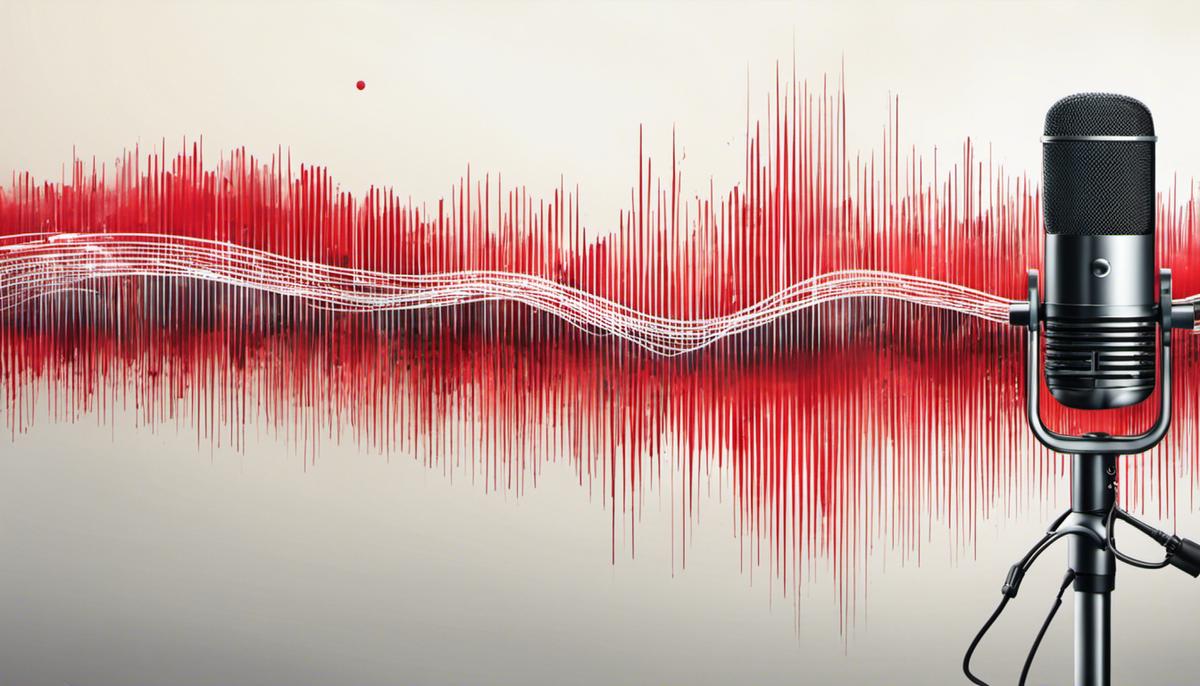
Post-Production: Tweaking Microphone Bleed
Unveiling the Art of Audio Engineering: Mitigating Microphone Bleed in Post-production
While microphone bleed, also known as spill or leakage, is often perceived as a challenge to quality sound recording, it also presents an opportunity for creative expression when harnessed and manipulated correctly. Conversion of this phantom force into an ally heavily depends on the prowess of a sound engineer. Let’s dive into how these audio wizards can master the art of dealing with microphone bleed in post-production.
Nothing screams precision in audio engineering louder than the use of Cardio-Pattern Microphones. These devices are known for their sensitivity being more concentrated towards the source of sound and less towards the sides or rear. Understanding the directional characteristics of these microphones can drastically reduce unwanted bleed.
Akin to the Cardio-Pattern microphones are Gooseneck Microphones, with their bendable features enabling the engineer to aim it toward the sound source. It reinforces precision and demonstrates how the art of sound lies in mastering even the most minuscule aspects of recording.
Defending the mix from environmental sounds like wind, breath pops, or even noisy sibilance is a craft in its own right. Utilizing windshields is a staple in this practice as they form a protective layer around the microphone, sparing your soundscapes from unwanted random sound intrusions.
Where windshields form a protective layer, Portable Isolation Booths build an entire fortress. They provide a small, contained environment that cuts off most of the surrounding ambient noise, thus significantly minimizing bleed.
In the digital post-production process, High-Pass Filters (HPF) prove to be a potent ally. They allow frequencies higher than a certain threshold to pass while reducing the lower ones, hence mitigating the bleed from bass-heavy elements.
Another tool within the post-production spectacle is the use of Compressors. These devices help manage the dynamics of the sound, taming those striking peaks that might cause unnecessary bleed through slight volume adjustments.
Understanding the science of acoustics and music creation is the bedrock for effective sound engineering. Acknowledging how sound waves interact with the environment and one another can lead to the creation of a fortified strategy to combat bleed.
Just like a painter wields different brushes to paint their masterpiece, a sound engineer must acquaint themselves with different microphones and mastering gear. Different mics have different propensities to pick up sound from various directions, and getting a hold of this knowledge is instrumental in tackling bleed.
Finesse in production techniques is where the marriage of science and art comes into the forefront. Creative positioning of instruments, thoughtful microphone placement, and crafty utilization of the recording space are few of the numerous techniques that can curb microphone bleed.
Shaping the sound and creating a sonic landscape not only brings forth the musical vision into reality but helps in managing the bleed as well. Strategic panning and equalization can create an engaging stereo image while keeping spill at bay.
Microphone bleed can be seen as a furtive component in music recording, impacting the recording subtly but surely. Recognizing its presence and potential influence is the first step toward either diminishing its impact or molding it into a contribution to the artistic vision.
Let the misunderstood ally in the world of music recording, the microphone bleed serve as a testament to the inventiveness of sound engineers. Navigating through the bleed can sometimes unleash new shades of creativity, providing a fuller, more naturalistic sound to the recording. Embrace it more fruitfully, and you might just be creating symphonies that sing not only to the ears but to the soul.

Undeniably, the world of sound recording is riveting, full of technical nuances and creative possibilities. The intricate journey of understanding and controlling microphone bleed guides us through it. It is these finer subtleties that can give a piece of music its unique identity; be it the raw, live textures that bleed imparts, or the clean and crisp sound achieved by minimizing it. Adequate knowledge of post-production tools and tweaks equips one to refine an audio track, often being able to make a significant difference even after recording. Thus, a mindful and informed approach towards microphone bleed can indeed be the distinguishing factor between an ordinary and an extraordinary sound recording.
Sound is a fascinating and furiously complex phenomenon that sculpts the worlds we inhabit, influencing our experiences, expressions, and environments. Engulfing us with its invisible hands, it has the power to soothe the soul with a dulcet melody, rush adrenaline with thunderous beats, or amplify tension with an eery silence. What we perceive as mere noise is, in essence, a dance of sound waves spiraling through space and time, interacting with surfaces, manoeuvring corners, and ranging off different material textures. This intricate waltz brings about phenomena like room reflections, echoes, and acoustic interference – the enigmatic characters of our sonic narratives. This exploration will chart the journey of sound waves, delve into the anatomy of acoustic interference, and identify ways to mould our rooms into more acoustically pleasing habitats – making subtle changes that can transform our auditory experiences, whether we’re hobbyists, music enthusiasts, or everyday listeners.
Understanding the Basics of Sound Wave Dynamics
Beneath the thunderous crescendos of a symphony, beneath the resonant vibes of a rock concert, and even beneath the soulful tones of a Sunday choir, there exists a world unseen, a symphony of movements, vibrations, and forces. This is the world of the physics of music. Peel back the exterior aesthetics of music and discover the beautiful scientific world that quietly brings to life all the notes we cherish. The rhythms, beats, harmonics, melodies, all magical painting in the canvas of our ears, owe their existence to exquisite laws of physics that choreograph this mesmerizing dance of vibrations. Understanding the science behind the art of music isn’t simply helpful for musicians, engineers, or technicians. It offers deep insights into the very nature of sound and, ultimately, our perception of music.
Consider this: When a guitarist strums a chord, it isn’t magic that sends wonderful vibrations through the air. It’s a complex interaction between force, tension, and vibration. The strings, each tightened to a different degree, vibrate at distinct frequencies when plucked, creating unique sounds. This is the magic of physics at play, translating tension and vibration into the tunes we love to jam to, dance or even shed a tear.
At the heart of it all is a phenomenon called “sound waves,” bundles of kinetic energy that travel from the source of the sound, like a piano or a drum, to our ears. The variations in tone we identify in music are fundamentally changes in wave frequency: greater the frequency, higher the pitch. Not forgetting harmonics, the secret ingredient behind a rich musical sound, which involves multiple frequencies playing at once. Essentially, harmonics are “resonant frequencies,” the frequencies at which an object naturally vibrates.
The physics of sound also reveals why a guitar sounds different to a flute, even when playing the same note. This particular wonder lies in the realm of timbre, the aspect of sound that allows us to distinguish between different musical instruments. Timbre is a complex blend of several frequencies produced together, molded by the materials, size, and shape of the instrument, illustrating again the intimate bond between music and physics.
Why does this matter? Well, by acknowledging the components of physics present in music, one can cultivate a deeper understanding and appreciation for the art in its entirety. It’s a mingling of art and science that seems as unlikely as it is inseparable. Imagine the charm of watching a ballet dancer when you know the forces, accelerations, and balances that make each graceful movement possible. Just like that, understanding the physics behind each vibrating string, each crashing cymbal, and each booming bass, enriches the connection with the music.
The physics embedded in music also plays an essential role in pushing the boundaries of sound technology. From the development of acoustic architecture, ensuring concert venues have the perfect sound, to the creation of intensifying surround sound systems and noise-canceling headphones; all these innovations that upscale our musical experience stem from understanding the principles of sound.
There is a rhythm and harmony in the world of physics, intertwined inseparably with the world of music. So the next time you’re swept away by a soaring melody or a pulsating bassline, remember the silent serenade of physics echoing beneath, painting this captivating masterpiece we call music.

Acoustic Interference: Refractions, Reflections and Echoes
The Invisible Intruders of Pure Harmony – Room Reflections and Echoes Explained
The symphony of music is a delicate dance between silence and sound. When every note hits just right, the collective resonance works its magic, stirring emotion and painting pictures in the mind’s eye. However, this lyrical ballet is delicately balanced; a step out of place can mar the spectacle, pulling you off the suspended disbelief that the music has drawn you into.
The unseen characters in this musical performance are room reflections and echoes; they play a more significant role than you might think. They filter, amplify, or degrade our magical resonance, sometimes ruining the dance before it has a chance to unfold.
Room reflections are the rogue notes that bounce off walls, ceilings, and floors, reaching an audience’s ears after the direct sound from the musical source. They are the products of your room’s acoustics, the complex phenomenon that dictates how sound behaves in a specific environment. When these reflected sounds interact with the direct sound, they can cause constructive interferences leading to unexpectedly louder sounds, or destructive interferences resulting in phase cancellation and dead spots. The end result: a murky and distorted faithfulness of what was initially an exquisitely composed tune.
Echoes, on the other hand, are musical ghost-notes. They are delayed reflections of the sound that reach the ears so late that they are perceived as unique repetitions of the original sound rather than part of it. Life within echoes might feel like stepping into another reality, which is seldom conducive to a captivating musical experience.
Both room reflections and echoes can play a variety of roles, either villainous or heroic. In the breathtaking legato of a violin solo, they might act as detractors, muddying the clear tone. Meanwhile, in a powerful choir piece within the hallowed halls of a cathedral, these same culprits might enhance the sound, creating that heavenly resonance.
But what can be done when room reflection and echoes conspire to wreak havoc on a sonic masterpiece? Sound treatment techniques, such as bass traps, diffusers, and absorbers, help subdue these unpredictable variables. Implementation of soundproofing materials and strategically designing a room’s layout are also effective methods to sculpt the acoustics, ensuring it complements, rather than hinders, the musical experience.
It’s a delicate balance, and the onus of creating optimal auditory environments typically lands on the shoulders of audio professionals. They are the intangible conductors, curating spaces that allow the pure, undeterred melody to shine through.
In closing, next time you sit down to revel in your favorite tune, contemplate the invisible dance occurring between room reflections and echoes. Acknowledge the dynamic interplay of this unseen ballet, for in the embrace of its unpredictability and sporadic beauty, a deeper respect for the art of music is forged.
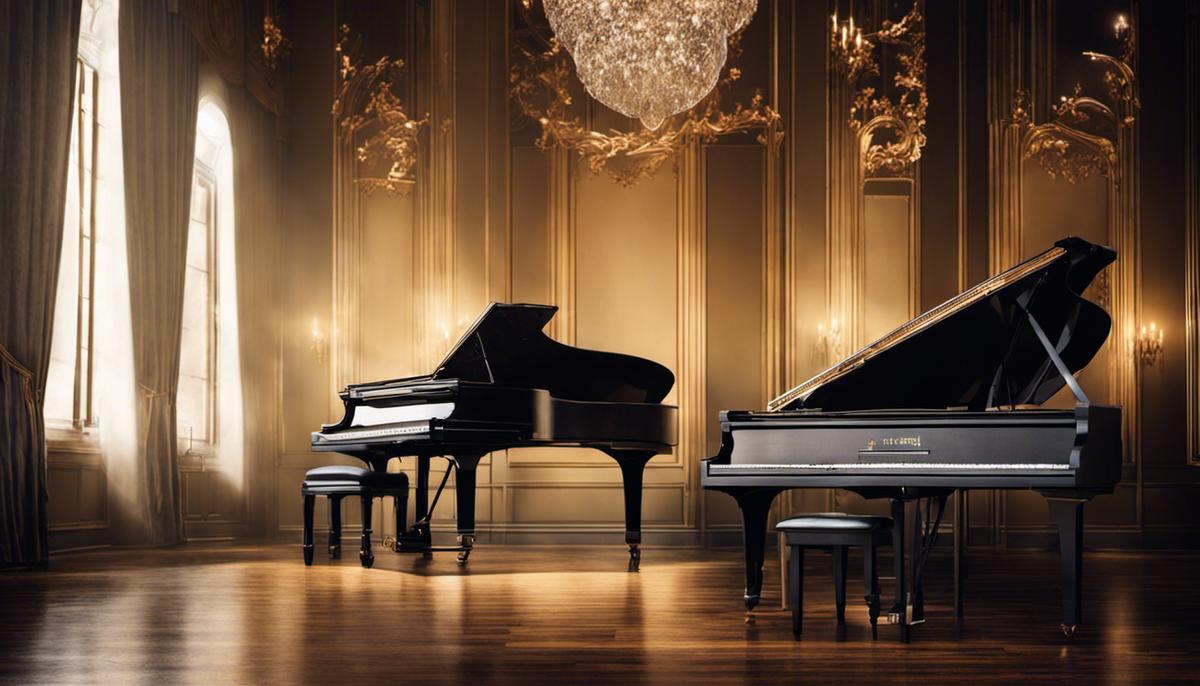
Soundproofing and Acoustic Treatment: Solutions for Room Echo
Stride into any majestic hall, gaze up at towering walls, sense the air vibrate and you’ll feel the invisible pulse of a hush.
Whether you’re in a giant cathedral or a humble attic, one universal constant remains — sound isn’t just about what’s been played or sung; it carries an intimate relationship with the space it inhabits.
Echoes, as we’ve come to know them, aren’t just mere repetitions but intimate whispers of the room articulating its soul.
Profound reflections of sound can both be a melodic boon or a sonic ban – the invisible virtuoso or the unseen villain.
In large spaces, such as churches or grand halls, the reflection becomes the ethereal echo that lends choral melodies an otherworldly charm.
Yet, in smaller spaces such as a cozy living room or a basement recording studio, these reflections can distort sound, turning an exquisite aria into a jumbled cacophony.
Room acoustics isn’t just a vague concept to be brushed aside, but a crucial ingredient to perfect the musical recipe.
Sound absorbing materials, diffusers, bass traps and reflection panels can be the sorcerer’s stones, turning discordant abodes into harmonious havens.
Strategic placement of these sound treatment tools not only carves a path for optimal sound quality but also shapes and massages the sonic personality of the room.
Look at a concert hall, swaying in quiet anticipation, everyone eagerly beckoning one thing—a pure and crystal clear sound.
This curation of the ambiance-driven by room acoustics – is oft times the brainchild of a group of unsung heroes, the audio professionals.
Heroes who master the art of bending, twisting and reflecting sound waves around a room, creating nothing less than a sonic Picasso.
Imagine this: the hum of low frequencies vibrating your heartstrings, crystalline high notes tickling your skin, and every note in between seeping seamlessly into your senses, all while the room cradles the melody.
It’s this kind of experience that makes room acoustics an essential part of the symphony, the unseen conductor maybe, guiding each musical note to its spot in the orchestra of your auditory experience.
Indeed, the acoustics of a room can be improved, manipulated and mastered to elevate the auditory experience.
A well-planned, calculated, and implemented acoustics treatment can give the room its voice, its musical identity.
It allows us to shape and design a world that is much more than the sum of its visual elements but bridges the unspoken, unseen, and unheard; a mystical world that hums, resonates and sings with music.
The ballad of acoustics and music is a timeless one that continues to inspire, teach and liberate. Let’s keep the music playing and nary forget the melody of the room where it plays.
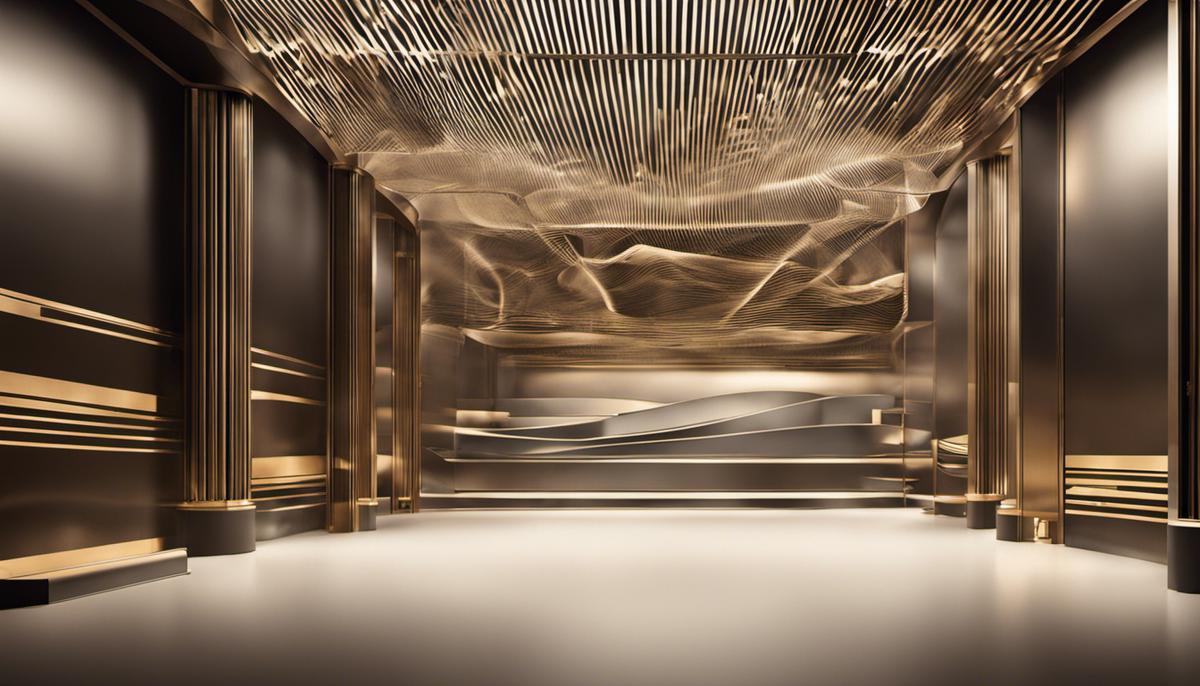
Case Study: DIY Acoustic Treatment at Home
Come away now on a journey into the vast world of acoustics. In your dedicated music spaces, have you ever truly considered the symbiosis of sound and space? This relationship, when understood, can open the door to a level of aural pleasure and satisfaction that was previously unfathomable.
With that said, reflections and echoes might sound like phenomena you’d come across in a physics classroom or a stretch of the Grand Canyon, but they actually play pivotal roles in our musical experiences. And no, you don’t necessarily need an advanced degree to understand them. When sound waves bounce off walls and ceilings, this creates reflections, adding depth and fullness to musical notes. Conversely, multiple reflections can cause echoes, potentially obscuring or muddying the original sound, thus impacting the overall quality.
Fortunately, artists and audio professionals aren’t left to the mercy of these reflections and echoes, as diverse range of sound treatment techniques available can be used strategically to shape the sounds we hear. Dampening materials like diffusers and bass traps manipulate reflections, absorbing, scattering, or diffusing the sound waves. This nuanced play between dispersion and absorption creates the ideal acoustic setup – the sound of silence, that wonderful absence of echo or reverberation, allowing the pristine sound to reach our ears untainted from any signal degradation.
There can be no doubt that room acoustics significantly shape the auditory experience. Next time you attend a live gig, an orchestral performance or even a vinyl session at a friend’s place, take a moment to consider the environment. The manipulation of room acoustics can make notes seem ethereal, vocals sound more poignant, and that one resonating guitar strum to forever echo in your memory. The impact is so profound that often, renowned establishments are sought after, not just for their stellar line-up, but for their immersive sound experience. It is the responsibility of audio professionals to masterfully curate these spaces for optimal musical exploration.
Drawing a parallel to another facet of life – think about how you outfit your home. The furniture and aesthetic elements chosen are a reflection of self, shaping your living environment to express your individuality. It’s the same with acoustics. Your acoustic choices have a strong bearing on the identity and aura of the music and venue. Whether it’s the heartfelt imperfections of a garage band, the rich acoustics of a cathedral choir, or the precise studio-produced sound, the setting becomes a part of the music, resonating with the emotional chord it strikes within the listener.
Music and acoustics have danced hand in hand throughout history, each influencing and shaping the other over time. Acoustic treatment is not just a passion project but an immersive journey of exploration. From understanding the nuances of sound manipulation, reflections, echoes and timbres, to creating an environment that holistically enhances the musical experience. By taking control of the acoustics in your own home, you can create a space that allows music to exude its emotion, texture, and character in the purest form.
Indeed, it’s a brave new – yet aesthetically old – world we’re stepping into. By embracing the power of acoustics, we move closer to sound. And it’s right here – in our living rooms, antiquated attics, cozy basements, we can kindle that sweet symphony of sounds, simply by understanding the science behind the art and implementing sound treatment appropriately. So, let’s dive into the deep end, absorb the rhythms, echo the resonances, and tune our lives to the wonderful world of music. As Leonard Cohen wisely shared, “There’s a crack in everything, that’s how the light gets in.” Acoustics is the eye, lets the music in.

Traversing through the circuitous landscapes of sound dynamics, we engaged in a profound dialogue about acoustic interference, room reflections, echoes, and their inherent mysteries. It’s fascinating to ponder how subtle changes in our surroundings can influence the symphony of sounds around us. From understanding these complex dynamics to initiating practical methods of acoustic treatment, soundproofing for echo control, and deciding the placement of a simple bookshelf – all subtly transform the soundscapes around us, enriching our aural experiences. As we keep exploring and experimenting within our sonic habitats, it’s a journey of enriching our auditory palette, creating immersive soundscapes, and embracing the sounds of silence. Remember – every corner, every surface, every room has its unique sound. It’s about tuning in, listening, and harnessing the perfect acoustics!
In the artistry of sound recoding, finesse and attention to detail are as important as the technical equipment used to capture and relay the melody and rhythm. It’s a world that can seem overwhelming, teeming with pitfalls and pedantic details that could deter a novice or even the most tenacious of enthusiasts. However, experience teaches us that knowing what to avoid can often be more effective than knowing what to do. Within the realm of music recording, the seemingly insignificant factors such as room acoustics, compression dominance, and recording loudness carry considerable weight in determining the quality of your end product. This discourse explores the ten most common mistakes encountered in the recording process and thoughtful solutions to circumvent them.
The Bane of Over-Compression
The masterful brilliance of music lies in its raw power, its ability to evoke a gut-wrenching emotional response with just a few harmonious notes strung together. Consider a symphony. An orchestra poised with a multitude of instruments, each bursting with the potential to create an auditory allure that’s as complex as the human experience. This complexity, with all its peaks and valleys, quiet whispers and roaring crescendos, can get lost when music is over-compressed.
To understand the essence of over-compression, imagine a breathtaking landscape. Now envision viewing that landscape through a grainy, pixelated photograph. The technique of audio compression is not inherently harmful. In fact, it’s a crucial tool in the sound engineer’s arsenal, a honed skill that can adeptly balance the dynamic range in a musical piece. The issue arises when we fall prey to the lure of the loudness war.
The loudness war is a relentless push in the music production industry to make music as loud as possible, often achieved through an overbearing level of compression. But why, you may wonder? To make it more prominent, more notable when played amongst other tracks. Like a star screeching for attention in a sky already ablaze with a million celestial bodies.
Decibels may spike, but the depth and nuance of the music often plunge into an abyss. Over-compression can rob music of its dynamic range, hurling the hushed whispers and powerful crescendos into a small, confined box. The melody begins to lose its soul. It’s like forcing the vastness of the Grand Canyon into a small fishbowl. Sure it’s contained, but what’s lost in the process is what makes it magical.
But don’t worry, this is not a portent of doom. The last decade has seen a turning tide against this incessant race for loudness; instead, there’s a surge towards quality. Remember, beauty often lies in the subtleties. In music, it’s the staccato notes lightly skipping over the ebb and flow of melody. It’s the haunting echoes of a guitar riff that linger long after the song has reached its ultimate cadence. Each beat, every pause, and shift in volume is a throbbing heartbeat in the body of the song – it deserves to be heard, to be felt in its entirety.
While compression continues to have a pertinent role in the transformation of raw recordings into polished pieces, a prudent hand in its application is necessary. After all, it’s about striking the right chord between the powerful and the delicate, the high notes, and the quiet strumming at the fringes. This balance, when respected and nurtured, can transport you to the heart of the music, with every beat echoing the artist’s passion and your own resonating in perfect harmony. Bring back the dynamic range, those quiet whispers and roaring crescendos, and allow music to breathe, to pulse, to make you feel alive. Yes! That’s what music should do – ignite your spirit and stir your soul. Because when every note matters, music becomes a symphony magnifique.
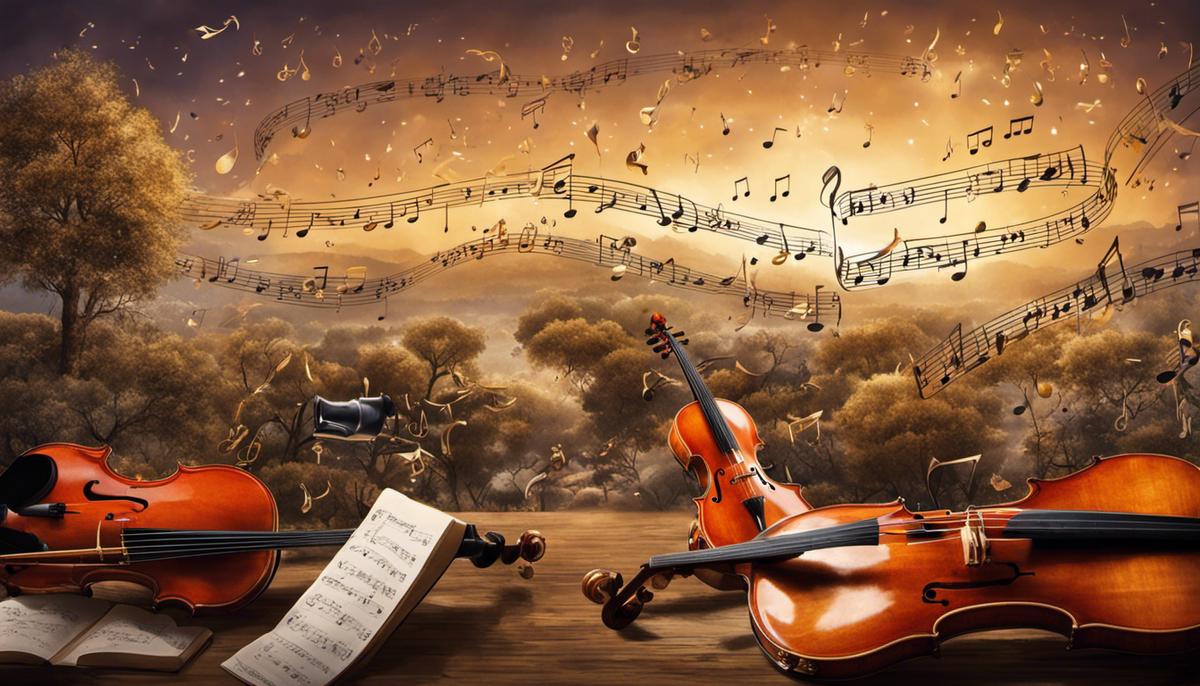
The Ill Advise of Recording Too Loud
Nothing unites people from all walks of life like music; it’s the one universal language everyone can understand. But as much as we all adore the thrum of a bass guitar, the heart-stirring croon of a lead vocalist, or the painted landscapes shaped by a composer’s mind, there’s growing concern about the titan of sound pressure we’re unleashing within our songs. From the recording studios’ sleek control rooms to the intricate stage setups of music festivals, are we being drawn into a dangerous dance with decibels?
The act of crafting sound is much like sculpting, gently chipping away at a block of marble until a masterpiece stands before you. Every note holds potential. Every silence paints a canvas of equilibrium. The process of recording involves understanding these elements and knowing their place within the symphony. But when we over-amplify the sound during the initial recording, it’s akin to placing that beautiful sculpture in front of a blinding spotlight. The real masterpiece is overshadowed; all we see are glaring highlights and harsh shadows, robbing audiences of the chance to fully appreciate the artist’s work.
Audio clipping is another casualty of this sonic arms race. This phenomenon manifests as distortion, rendering music as a sheer cacophony rather than a harmonious blend of tones. It’s not just the classical music aficionados or jazz purists who mourn this lack; even headbangers at rock concerts know when a delightful riff has turned into a dissonant roar. The desire to push the sound to its limits might seem riveting in theory, but the reality is often a lesser version of the true masterpiece.
Moreover, what’s becoming hard to ignore is how, in this quest for a louder sound, we’re risking our hearing health. Extending the toll beyond fidelity, sound engineers, musicians, and dedicated aficionados spend extended hours exposed to high decibel levels. Left unchecked, it’s a sure-fire recipe for tinnitus and noise-induced hearing loss. Hearing, once lost, is irreplaceable; it’s a high price to pay for a loudness that may not necessarily add value to the music experience.
While it’s crucial to explore the boundaries of sonic creativity, it’s as vital to prioritize the human aspect of music. After all, music is a shared experience; it’s vibratory patterns that connect hearts and minds across continents. Let’s honor this gift by appreciating the intricate dynamics of sound – the soft whispers of a violin solo, the gentle build-up of a rock anthem, the emotional eruption from a choir. The power of music lies not just in how loud it can get – but in its ability to touch souls, at any volume.

The Ignored Importance of Room Acoustics
Stepping into the depths of sound – it’s a thrilling adventure into the recesses of sonic timbre and tonal landscapes. Like a painter delicately applying meticulously mixed hues against a blank canvas, music creators weave sounds into symphonies that engage, inspire, and connect.
Overlooking one central aspect in this intricate process, however, can be akin to viewing this painting through a murky glass. That aspect is the very space where the music is birthed – the recording room.
When joyous melodies pirouette through the air of a recording room, the room listens. It absorbs, reflects, and even manipulates those rhythms and harmonies that resonate within its boundaries. Do we, immersed in our acoustic pursuits, ever stop to listen back?
The acoustics of our recording room can subtly yet significantly affect the atmosphere and, indeed, the soul of the production. It is like an invisible hand that gently cradles the notes, caresses the harmonies, and guides the dynamics towards musical fruition.
Material, size, shape, and furnishings within a room can twist the ebb and flow of sound waves, nudging them into places where they bounce, echo, and eventually shape your music’s final sound. An undisciplined echo, an offending frequency, or a belligerent bass might all originate not from the music itself but from the room serving as the performance’s stage.
It isn’t a war against reverberation or an attempt to quell the rogue echo. It’s about understanding and harnessing the power of space, tapping into the veins of resonance and timbre that flow through the anatomy of your recording room. Our spaces breathe with us, their every inhalation and exhalation in sync with the rhythm of our melodies.
In our pursuit to protect the essence of music from becoming a casualty in the loudness war, are we possibly neglecting another battlefront right in our recording rooms? As we contemplate the organic beauty of sound, its nuanced echo in our spaces, and the phenomenal auditory experiences they can create, let’s lend our ears to the silent song sung by our recording rooms. Only then might we truly bring our music to life with the soulful authenticity it deserves.
In the end, music is emotion. Its power to stir hearts is unparalleled. And perhaps, it’s time to acknowledge that the symphony we create isn’t just nurtured by our musical intentions and skills, but also by the often overlooked acoustics of our cherished recording room.
Listen. Experiment. Understand. Let our rooms sing back to us as we explore this incredible sonic journey. Because when we create music, every note and its echo matters.

As artists and hobbyists, the perception of mistakes can often feel counterproductive, holding us back from realizing our full creative potential. Yet, overcoming these mistakes is a journey well worth embarking on, as it can significantly improve the end result, while enriching our understanding and enjoyment of the recording process. Thus, by adopting a balanced approach to compression, monitoring the loudness during recording, and giving due consideration to room acoustics, we can steer clear of the more common recording pitfalls. In doing so, we empower ourselves to create productions that are rich in dynamic expression and devoid of artificial constraints, ultimately resonating with our listeners on a deeper, more meaningful level.
Page 2 of 12 « 1 2 3 4 5 » ... Last »


















